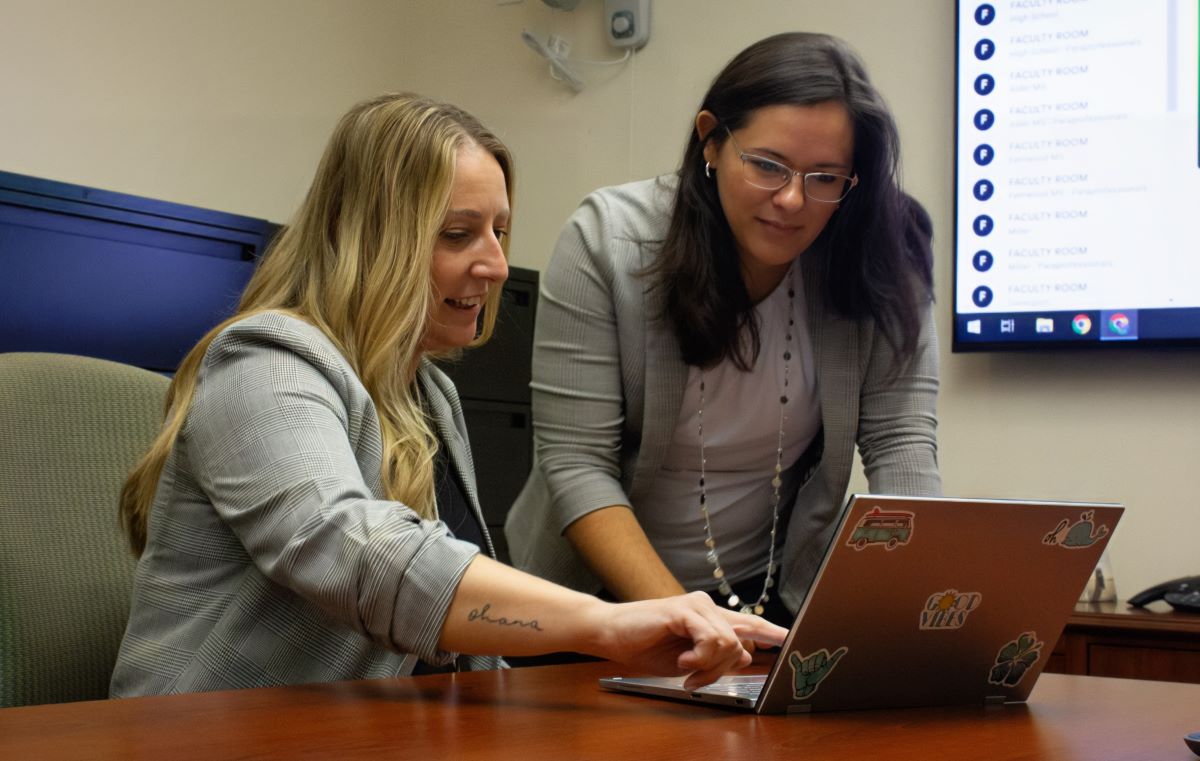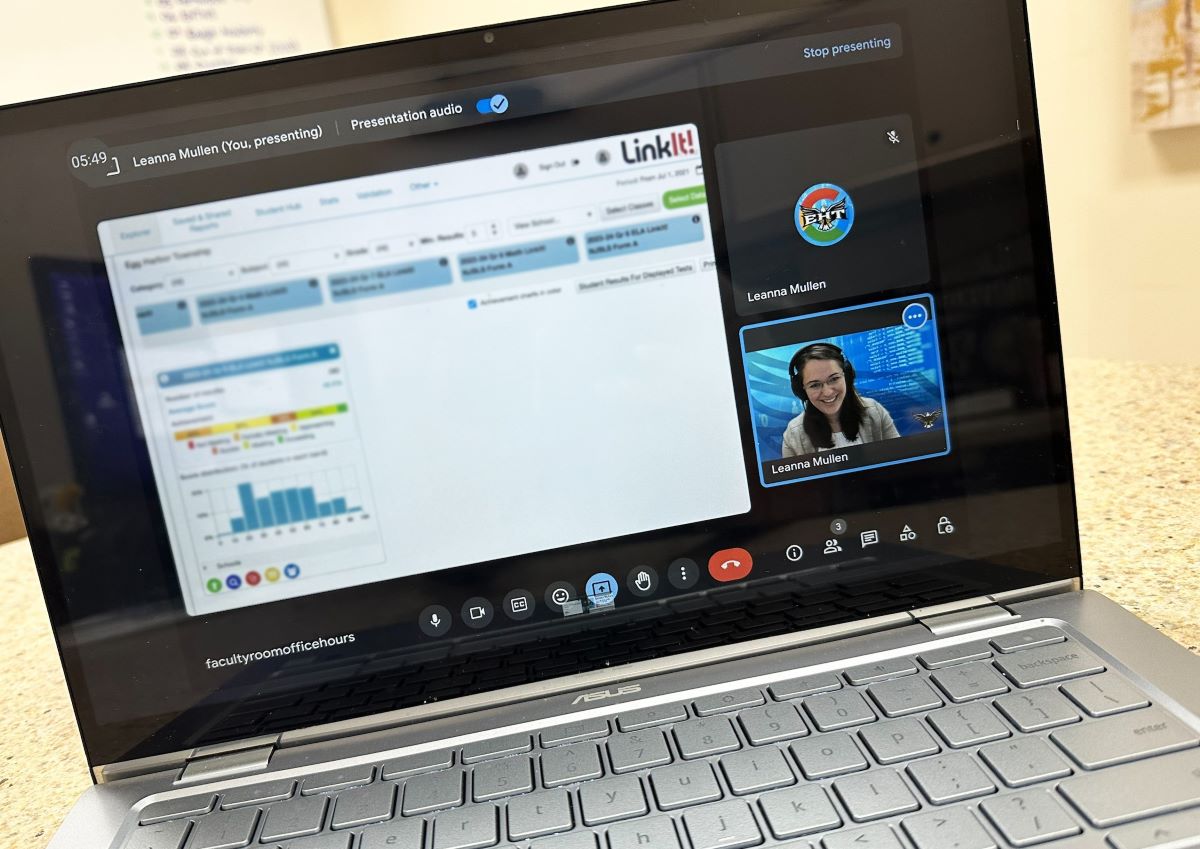
Keeping professional development fresh and current is a challenge for administrators. Creativity is key, and passionate educators have risen to the challenge.
Dr. Leanna Mullen of Egg Harbor Township School District, a recent Innovative Leader Award winner for “Best Example of Professional Development,” discusses her innovative PD program and how it engages teachers and enhances the overall classroom experience.
Using Data to Personalize PD
Since Mullen, a student data coordinator and Rtl data coach, started at Egg Harbor Township (EHT) Schools 10 years ago, she has served in many capacities, including acting as a bridge between the IT department and curriculum administrators.
“I support universal screening data collection and provide in-depth data analysis at the individual student level and large scale, district-wide projects,” says Mullen. “I’m a member of our district’s Professional Development Committee and the primary professional development facilitator for all things edtech.”
This natural interest in data analysis helped Mullen create The Faculty Room, a unique spin on the traditional PD program.
The Professional Development Committee created an annual needs assessment survey and at the end of last school year, they expanded it to ask teachers about their preferred learning modalities and delivery of PD content, says Mullen. “Do they like large group auditorium style keynotes? Do they prefer intimate PLC conversations? Do they like curated video content?”
Mullen and her team discovered a large percentage of staff were looking for individualized learning and autonomy while maintaining content hyper-focused on EHT. The solution was simple from a mechanics standpoint as The Faculty Room is simply a Google Classroom.
“We are a Google for Education district, so the LMS made sense for us,” says Mullen. “We created a Faculty Room for each one of our nine buildings (some with more than 200 staff), and assigned all the teaching staff as students.”
Since starting this virtual classroom concept, the committee has been able to make announcements, add reading and video materials, and provide teachers and admin the opportunity to directly connect via the private commenting feature.
The New Demand for On-Demand

Flexibility through on-demand or asynchronous content can help educators who struggle with tight schedules. For those with family obligations or other personal considerations where travel to attend courses presents challenges, this type of mode can be a game changer, as well as a leveler in terms of accessibility.
“To introduce some of our new processes this school year, our team has created a number of short, 3-5 minute videos (titled “Independent Learning”) on specific topics that could be described as ‘EHT-centric’,” says Mullen. “We categorized them based on upcoming events and due dates (e.g. “Everything I need to know for September”).
During their opening PD days, Mullen added Faculty Room time right into educators’ PD schedules. This included some required reading and video content, as well as optional “extra credit” materials for those wanting to take their learning further.
“To ensure they understood the information presented, we outlined a list of action steps to mark complete as they finished,” Mullen says. “This gave staff the opportunity to get acclimated in the LMS while providing the flexibility to complete the assignments when it worked best for them. It also provided a layer of accountability that we weren’t able to capture before.
Staff has told the committee that the on-demand design of the Faculty Room is a convenient way to learn. They don’t have to search through old emails or an infinite number of Google files to locate directions or resource hyperlinks. Plus, it saves them a lot of time when they can review just what they need when they need it.
“We are working on an Innovation and AI series now and we’ll continue to create content based district initiatives and staff requests,” says Mullen
Since the initial roll out, Mullen’s team has produced more content related to the district’s Equity Committee and a detailed review of the New Jersey Student Growth Objectives (SGOs).
“Office Hours” for Every Schedule

Mullen created "Office Hours" to provide an extended opportunity for personalized PD.
“I have done a lot of research on andragogy [teaching adult learners] and educator self-efficacy,” says Mullen. “Everything around professional learning and teacher confidence indicates the ability to ask questions and feeling supported is key to their success. In short, it comes down to personalization and relationships.”
To answer this need, the virtual and in-person ‘Faculty Room Office Hours’ were offered as an extension of the asynchronous PD. Appointment slots use Google Calendar, so any of the 1,300+ faculty can reserve a 15-minute one-on-one meeting for support. The two to three “Office Hours” days offered each month get completely booked.
“Staff has been incredibly receptive,” says Mullen. “I’ve met with teachers, counselors, secretaries, and even building principals.”
Support Matters
This initiative did not carry any monetary cost — making it a potential solution for any district. However, creating The Faculty Room required a lot of upfront time to implement to add staff to Classrooms, record video content, and schedule assignments.
“Our district recognizes the value it has brought to our staff,” says Mullen. “Our Supervisor of Literacy, Nanci Barr, our Director of Career and Technology, Dr. Carmelita Graham, and our Assistant Superintendent of Curriculum, Lily Moss, all offered their time to support the project.” Day-to-day maintenance is handled by the administrative team, and the central administration and Board of Education has also been supportive.
“They know we are always striving for the best when it comes to supporting our students and staff -- and will do whatever it takes to support that,” says Mullen. ”Together, we divide and conquer!”







